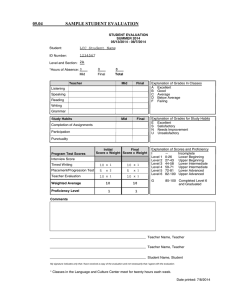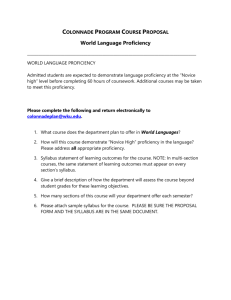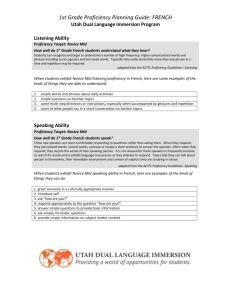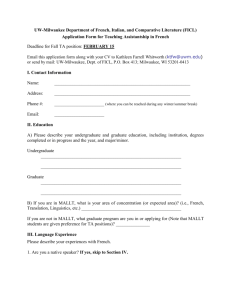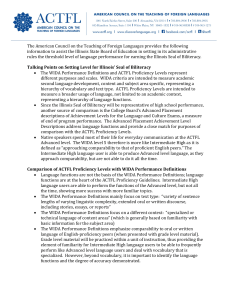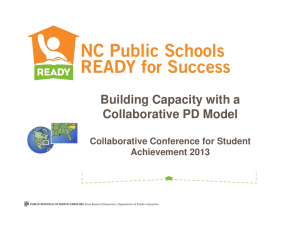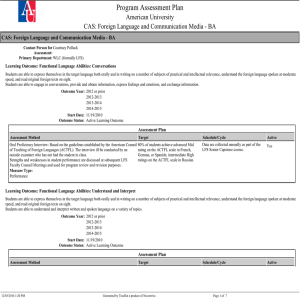World Language Learning in the 21st Century
advertisement
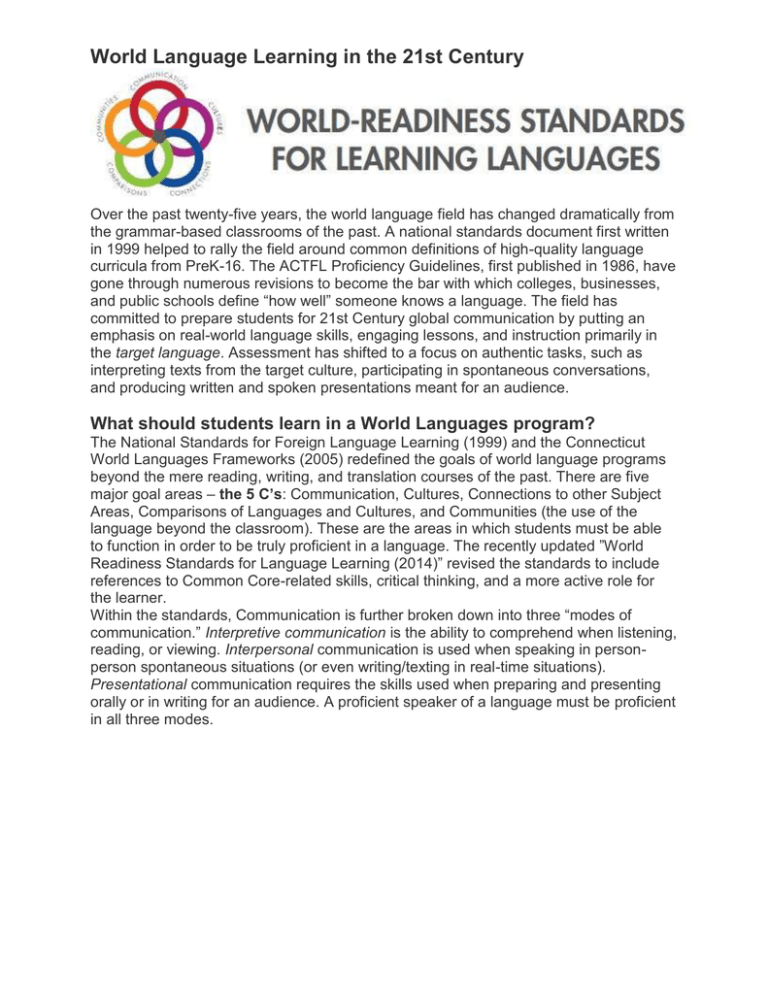
World Language Learning in the 21st Century Over the past twenty-five years, the world language field has changed dramatically from the grammar-based classrooms of the past. A national standards document first written in 1999 helped to rally the field around common definitions of high-quality language curricula from PreK-16. The ACTFL Proficiency Guidelines, first published in 1986, have gone through numerous revisions to become the bar with which colleges, businesses, and public schools define “how well” someone knows a language. The field has committed to prepare students for 21st Century global communication by putting an emphasis on real-world language skills, engaging lessons, and instruction primarily in the target language. Assessment has shifted to a focus on authentic tasks, such as interpreting texts from the target culture, participating in spontaneous conversations, and producing written and spoken presentations meant for an audience. What should students learn in a World Languages program? The National Standards for Foreign Language Learning (1999) and the Connecticut World Languages Frameworks (2005) redefined the goals of world language programs beyond the mere reading, writing, and translation courses of the past. There are five major goal areas – the 5 C’s: Communication, Cultures, Connections to other Subject Areas, Comparisons of Languages and Cultures, and Communities (the use of the language beyond the classroom). These are the areas in which students must be able to function in order to be truly proficient in a language. The recently updated ”World Readiness Standards for Language Learning (2014)” revised the standards to include references to Common Core-related skills, critical thinking, and a more active role for the learner. Within the standards, Communication is further broken down into three “modes of communication.” Interpretive communication is the ability to comprehend when listening, reading, or viewing. Interpersonal communication is used when speaking in personperson spontaneous situations (or even writing/texting in real-time situations). Presentational communication requires the skills used when preparing and presenting orally or in writing for an audience. A proficient speaker of a language must be proficient in all three modes. How do we measure “proficiency” in a language? There are clear definitions of world language proficiency that can be used to assess student progress in the target language. These are established by the American Council on the Teaching of Foreign Languages (ACTFL) and are used nationwide to discuss learner proficiency. The “ACTFL Proficiency Scale” defines language learning on a continuum from Novice to Distinguished, with each level divided further into low, mid, and high (ex. Novice-Mid). North Haven Public Schools Proficiency Targets in World Language The first column in the table is the minimum level we expect all students - who have not studied the language before - to achieve by the end of the level; however, the curriculum for each level is designed to help students reach the second column target – and some students may progress even further. Note that the progression through the Intermediate Level requires mastery of a number of skills, as well as the ability to “create” with language; therefore, it can take a few years to get through. Level I (3 years of MS) Level II Level III Level IV Level V (or AP, UCONN) All students reach Novice Mid Novice High Intermediate Low Intermediate Mid Intermediate Mid Some students reach Novice High Intermediate Low Intermediate Mid Intermediate Mid Intermediate High Student Goal-Setting and Proficiency It is important for students to see how we organize and assess world language learning so that they can set their own goals for language study. Students should be aware of the 5 C’s of the standards and the concept of the 3 “modes of communication.” To discuss proficiency, the ACTFL-NCSSFL Can-Do Statements define proficiency levels in student-friendly language that allows them to by check off what they know and set goals for future learning. The North Haven World Languages Department intends to create lessons to help students recognize the characteristics of each proficiency level and consider what they need to do to improve from one level to the next (such as this rubric, from the ACTFL AAPPL test, does.)
